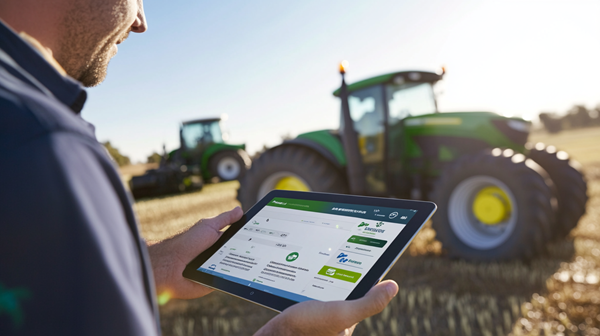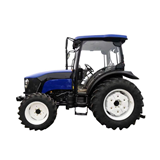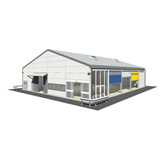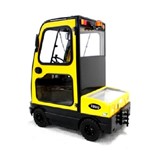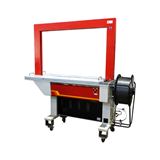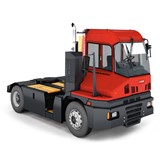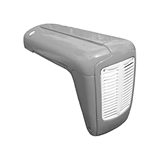Find the best Australian farm tractor deals. With tips on prices, horsepower, 4WD vs 2WD, attachments, financing & AS/NZS 4024 compliance—all in one guide.
Key Takeaways
- Types and Prices: Tractors in Australia are available in four main types—Compact, Utility, Row-Crop, and Orchard—ranging in price from $25,000 to $200,000 based on horsepower and features.
- Key Features: Focus on horsepower, transmission type, 4WD vs. 2WD, PTO, and hydraulic systems to match your farming tasks.
- Financing Options: Consider government grants, loan repayment structures, and trade-in options to manage your purchase.
- Compliance: Ensure tractors meet AS/NZS 4024 safety standards, are equipped with ROPS, and check if operator safety certifications are required.
Introduction
Farm tractors are the backbone of Australian agricultural operations, providing the power and versatility needed to handle tasks ranging from ploughing and seeding to hauling and irrigation. Whether you're a first-time buyer or looking to upgrade your existing machinery, this guide offers all the information you need to make an informed decision. From understanding different types of tractors to securing financing and ensuring compliance with Australian regulations, this comprehensive guide covers everything to help you find the right tractor for your needs.
Types of Farm Tractors and Prices
Understanding the different types of tractors available and their associated price ranges is crucial for making the best investment for your farming needs. Here’s an in-depth look at the primary types of farm tractors you’ll encounter in the Australian market:
1. Compact Tractors
- Horsepower: 20–60 HP
- Common Uses: Best suited for small-scale farms or tasks that require agility and precision, such as mowing, landscaping, and light tilling.
- Price Range: $25,000 – $60,000
- Key Features:
- Small footprint, making them ideal for tight spaces.
- Often equipped with 4WD to handle various terrains.
2. Utility Tractors
- Horsepower: 40–100 HP
- Common Uses: These tractors are all-rounders, suitable for a wide range of tasks like ploughing, hauling, and general farm work. They provide more power and capabilities than compact tractors and can tackle a broader range of farming operations.
- Price Range: $50,000 – $120,000
- Key Features:
- Versatile and often feature larger tires and stronger hydraulics.
- Can handle medium-duty to heavy-duty tasks.
3. Row-Crop Tractors
- Horsepower: 80–250 HP
- Common Uses: Primarily used in large-scale crop farming, these tractors are designed for tasks like cultivating, planting, and spraying row crops such as corn and wheat.
- Price Range: $100,000 – $200,000
- Key Features:
- High horsepower for demanding applications.
- Precision steering and adjustable wheel widths for row-crop operations.
4. Orchard Tractors
- Horsepower: 40–75 HP
- Common Uses: Compact and manoeuvrable, orchard tractors are ideal for tight spaces like orchards, vineyards, and other areas requiring agility.
- Price Range: $30,000 – $80,000
- Key Features:
- Narrow wheelbase for tight spaces.
- Often have a low centre of gravity for better stability in steep areas.
Key Tractor Features to Consider
Choosing the right tractor is about matching the features to your farming operations. Here are the key specifications and systems you should prioritise:
1. Horsepower (HP)
Horsepower determines how much power your tractor has for performing heavy-duty tasks like ploughing, tilling, and hauling. For lighter tasks like mowing or small tilling jobs, a compact tractor with 20–60 HP should suffice. For tasks requiring higher power, such as large-scale ploughing, choose a utility or row-crop tractor with 80+ HP.
2. Transmission Types
- Manual: Offers greater control and is generally cheaper but requires more operator skill.
- Hydrostatic: Easier to use, especially for less experienced operators, as it provides automatic speed control and smooth transitions.
- Power-shuttle: Allows for smooth direction changes without stopping the tractor, ideal for repetitive tasks.
3. 2WD vs. 4WD
- 2WD: Typically more affordable and easier to maintain, suitable for light to medium-duty tasks on flat terrain.
- 4WD: Provides better traction, ideal for rough terrain or wet conditions, commonly found in utility and row-crop tractors.
4. Power Take-Off (PTO)
The PTO system enables the tractor to power external equipment like mowers and tillers. Ensure that your tractor comes with the correct PTO system (standard, mid, or rear), depending on your planned attachments.
5. Hydraulic Systems
Hydraulics are used for lifting and controlling attachments like ploughs, seeders, and loaders. Ensure the tractor has sufficient hydraulic power and compatible couplers for your specific needs.
Maintenance of Farm Tractors
A tractor is a long-term investment, and regular maintenance will ensure it stays in peak condition for years. Here's a look at common maintenance tasks and tips:
Common Maintenance Tasks
- Oil and Filter Change: Every 100–200 hours of operation.
- Air Filters: Replace every 200–500 hours to ensure engine efficiency.
- Battery: Clean terminals regularly and check for corrosion.
- Tires: Inspect for wear and maintain proper inflation for optimal performance.
Additional Maintenance Tips
- Genuine Parts: Always use genuine parts for repairs to maintain performance and avoid voiding your warranty.
- Fluid Checks: Regularly inspect and top up fluids (coolant, oil, and hydraulic fluid) to keep your tractor running smoothly.
Financing Your Farm Tractor
Farm tractors are a significant investment, but financing options are available to help manage the cost. Below are some financing methods for Australian buyers:
1. Equipment Loans
- Interest rates typically range from 4% to 8% for terms of 3 to 7 years.
- Available through banks or agricultural lenders, equipment loans allow you to spread the cost over several years.
2. Lease-to-Own
- Allows you to lease the tractor with the option to purchase at the end of the lease period.
- Provides the flexibility of a rental with the eventual opportunity to own the tractor.
3. Hire Purchase
- You make monthly payments with the option to own the tractor once the full price is paid off.
- Suitable for businesses that want to spread costs while still gaining asset ownership.
Financing Tips
- Always compare loan offers from various lenders to ensure you get the best deal.
- Consider government grants or financial assistance programmes for farm machinery purchases.
Warranties and Support
When investing in a tractor, understanding the warranty coverage is essential. Tractor warranties typically range from 1 to 5 years, but many brands offer extended warranties for up to 10 years.
Key Warranty Considerations
- Parts Coverage: Verify which components are covered, such as the engine, transmission, and hydraulics.
- Labour Costs: Ensure the warranty covers labour costs for repairs.
- Exclusions: Be clear on what is not covered, such as normal wear and tear or damage caused by misuse.
Compliance and Certification Considerations
Australia has strict safety and environmental regulations when it comes to farm machinery. Buyers should ensure their tractor complies with the following standards:
1. Australian Standard AS/NZS 4024
This standard ensures tractors meet safety requirements related to operator safety and machine operation. Make sure your tractor is certified to comply with this standard.
2. Rollover Protection Systems (ROPS)
Tractors must be fitted with ROPS to prevent injuries in the event of a rollover. This is a critical safety feature to look for.
3. Australian Tractor Safety Certification
Some manufacturers offer certifications that confirm their tractors meet Australian safety standards. Ensure this certification is present before purchase.
4. Emissions and Noise Levels
Depending on where you operate, tractors may need to meet specific emission standards and noise level regulations, especially in environmentally sensitive areas.
Common Questions from Farm Tractor Buyers
1. What horsepower should I choose for my farm tractor?
The horsepower you need depends on the size of your farm and the tasks you plan to do. For small farms or lighter tasks, 20–60 HP may be enough. Larger farms or those needing heavy-duty work should consider 80+ HP.
2. Should I buy new or used?
New tractors offer the latest technology and full warranties but come at a higher price. Used tractors are more affordable but may require more maintenance and often don’t come with warranties.
3. What financing options are available for farm tractors?
You can opt for equipment loans, lease-to-own agreements, or hire purchase schemes. Loan interest rates generally range from 4% to 8%.
4. How long does a tractor last?
A well-maintained tractor can last 10 to 20 years, depending on the brand and usage.
Conclusion
Purchasing a farm tractor is a significant investment and an important decision for any agricultural business. By understanding the different types of tractors, their prices, key features, financing options, maintenance needs, and compliance requirements, you can make a smart decision that aligns with your farming goals. Whether you need a compact tractor for light tasks or a powerful row-crop tractor for large-scale operations, this guide provides you with the knowledge to choose the right machine to keep your farm running smoothly for years to come.

